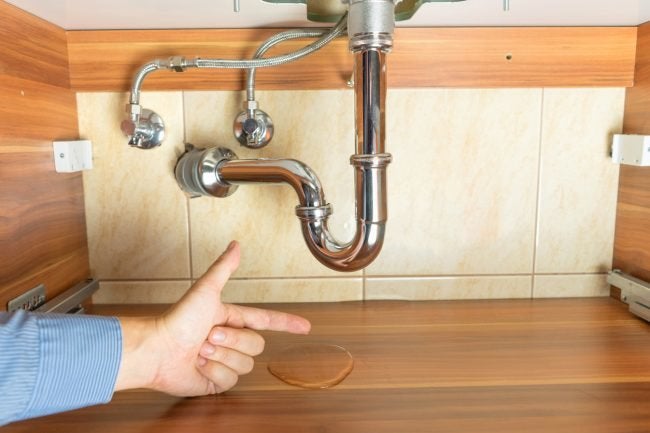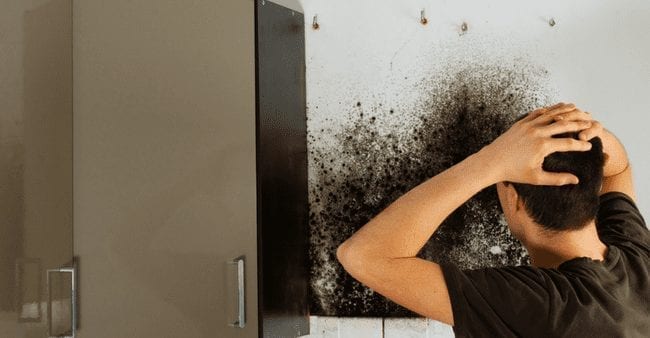Guide To Water Leak Detection In The House
Guide To Water Leak Detection In The House
Blog Article
We have unearthed the article on Hacks to detect leaks directly below on the web and felt it made good sense to relate it with you over here.

Early discovery of dripping water lines can alleviate a prospective catastrophe. Some tiny water leaks might not be visible.
1. Check Out the Water Meter
Every home has a water meter. Checking it is a guaranteed way that helps you uncover leakages. For beginners, turn off all the water sources. Make sure no person will certainly purge, utilize the faucet, shower, run the cleaning machine or dish washer. From there, go to the meter and also watch if it will alter. Given that no one is using it, there ought to be no movements. If it moves, that indicates a fast-moving leak. Similarly, if you discover no changes, wait a hr or 2 and examine back once again. This means you might have a sluggish leakage that can even be below ground.
2. Examine Water Usage
If you spot unexpected changes, despite your consumption being the same, it indicates that you have leaks in your plumbing system. An unexpected spike in your costs shows a fast-moving leak.
Meanwhile, a steady rise monthly, despite the exact same habits, reveals you have a slow leak that's likewise gradually rising. Call a plumber to completely check your residential or commercial property, particularly if you really feel a cozy area on your floor with piping beneath.
3. Do a Food Coloring Test
30% comes from commodes when it comes to water intake. Test to see if they are running effectively. Decrease specks of food shade in the tank and wait 10 mins. There's a leak between the storage tank and also dish if the shade in some way infiltrates your bowl throughout that time without flushing.
4. Asses Outside Lines
Don't fail to remember to inspect your exterior water lines also. Ought to water leak out of the link, you have a loose rubber gasket. One small leak can squander heaps of water and spike your water expense.
5. Examine as well as Evaluate the Circumstance
House owners must make it a routine to inspect under the sink counters and also inside cabinets for any kind of bad odor or mold growth. These 2 warnings suggest a leakage so punctual focus is needed. Doing regular inspections, even bi-annually, can conserve you from a major trouble.
Check for stainings as well as compromising as many pipelines and also appliances have a life expectancy. If you think dripping water lines in your plumbing system, don't wait for it to escalate.
Early discovery of leaking water lines can alleviate a possible catastrophe. Some tiny water leakages may not be visible. Examining it is a proven means that aids you discover leaks. One little leakage can waste heaps of water and increase your water costs.
If you think leaking water lines in your plumbing system, do not wait for it to rise.
How to Know If Your Home Has a Hidden Leak
Water Meter Reveals Inexplicable Water Usage
If you’d like to test whether or not there’s a leak somewhere in your home, you can do this using your water meter. Here is how to conduct the test:
Don’t use any water in your home for at least 30 minutes; this also means not turning on faucets or water-using appliances.
Go outside, and check your water meter for activity.
If your water meter shows that there was activity, even though no one was using any water, this proves that there is a leak in your home.Visible Mold or Mildew Growth
Leaks behind walls create moist, dark environments that allow mold and mildew to grow and thrive. Eventually, you might see mold growth forming on the wall closest to a hidden leak.
If mold is growing in an area that receives a high amount of moisture, such as a bathroom, it may simply be an indication that better ventilation is needed. However, if you see mold growth on a wall or the ceiling in an area where you would not expect, you probably have a hidden leak.
Musty, Mildew Odor
Sometimes you might not be able to see the mold or mildew that is growing as a result of a leak. However, the smell can give the problem away just as easily. If you catch a whiff of something musty, there’s a good chance that old water is collecting somewhere in your home that you can’t see.
Stained/Warped Walls, Ceilings, or Floors
When your home soaks up water, a variety of red flags can become visible, including ceiling stains, bubbling drywall, warped walls, and sagging floors. While these issues can be caused by excess humidity, they can also be signs that a pipe or plumbing connection has started leaking behind your walls.
Inexplicably High Water Bill
After a while, you get a general sense for what your water bill should be. If you own a pool or sprinkler system, your bill will tend to be higher during summer. However, if you receive a water bill that seems especially high, and you can’t figure out what caused it, then you may have a hidden leak somewhere that’s increasing your bill.
https://www.plumbingjoint.com/blog/2019/july/how-to-know-if-your-home-has-a-hidden-leak/

I was shown that editorial on Detecting hidden plumbing leaks through a friend on another site. Kindly take the opportunity to share this post if you enjoyed it. Thanks a bunch for your time. Come back soon.
Report this page